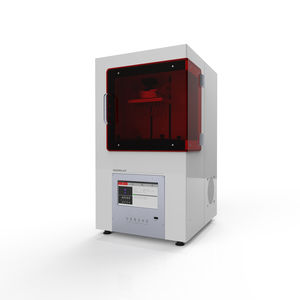
3D viewing software MicroForm®import3D printingmodeling

Add to favorites
Compare this product
Characteristics
- Function
- 3D viewing, import, 3D printing, modeling
- Applications
- dental
- Area of the body
- dental
- Operating system
- Windows
Description
3D Print job preparation can be a time consuming task. Orienting, supporting and editing meshes in a way that they actually print can be challenging. MicroForm makes things easy.
Hardware and software requirements
OpenGL 3.3 (most modern pc’s support this)
Windows 7, 8 or 10
At least 2Gb memory. 4Gb is advised
Dedicated GPU is advised, not required
Mesh errors and diagnosis
When a part is imported and read a subset of possible errors is checked. (Naked edges, Non manifold edges, degenerate faces and duplicate faces) If errors are detected that might cause the print to fail the software will add a yellow exclamation mark to your part. When in support mode, a full mesh diagnosis can be run on the part. You find the mesh diagnosis in the tab next to the supporting tabs. By clicking the eye icon behind each error you can view error in your part. We describe all possible mesh errors shortly below.
NAKED EDGES AND HOLES
Naked edges are edges that only have 1 connected triangle face. This means there is a hole in the mesh. This might result in artifacts during slicing.
Planar holes are flat holes that reside in 1 plane. All naked edges on the border are connected. They are easily fixed by triangulation of the hole.
Non planar holes have edges that lie in different planes. Hence they are harder to repair automatically.
NON MANIFOLD EDGES
Non manifold edges are edges that have 3 or more faces adjacent to it. They might result in slicing errors but not necessarily.
INTERSECTING FACES
Intersecting faces means the faces intersect. This is not necessarily a bad thing. It can mean you have multiple disjoint parts or self intersecting parts.
VIDEO
Catalogs
No catalogs are available for this product.
See all of Microlay‘s catalogs*Prices are pre-tax. They exclude delivery charges and customs duties and do not include additional charges for installation or activation options. Prices are indicative only and may vary by country, with changes to the cost of raw materials and exchange rates.




